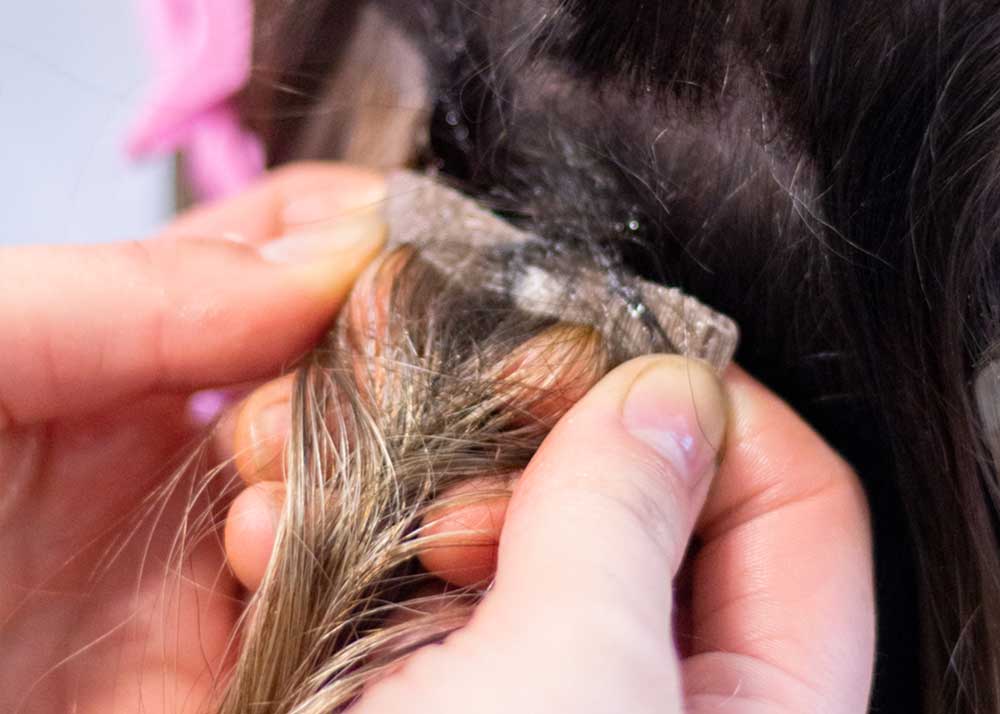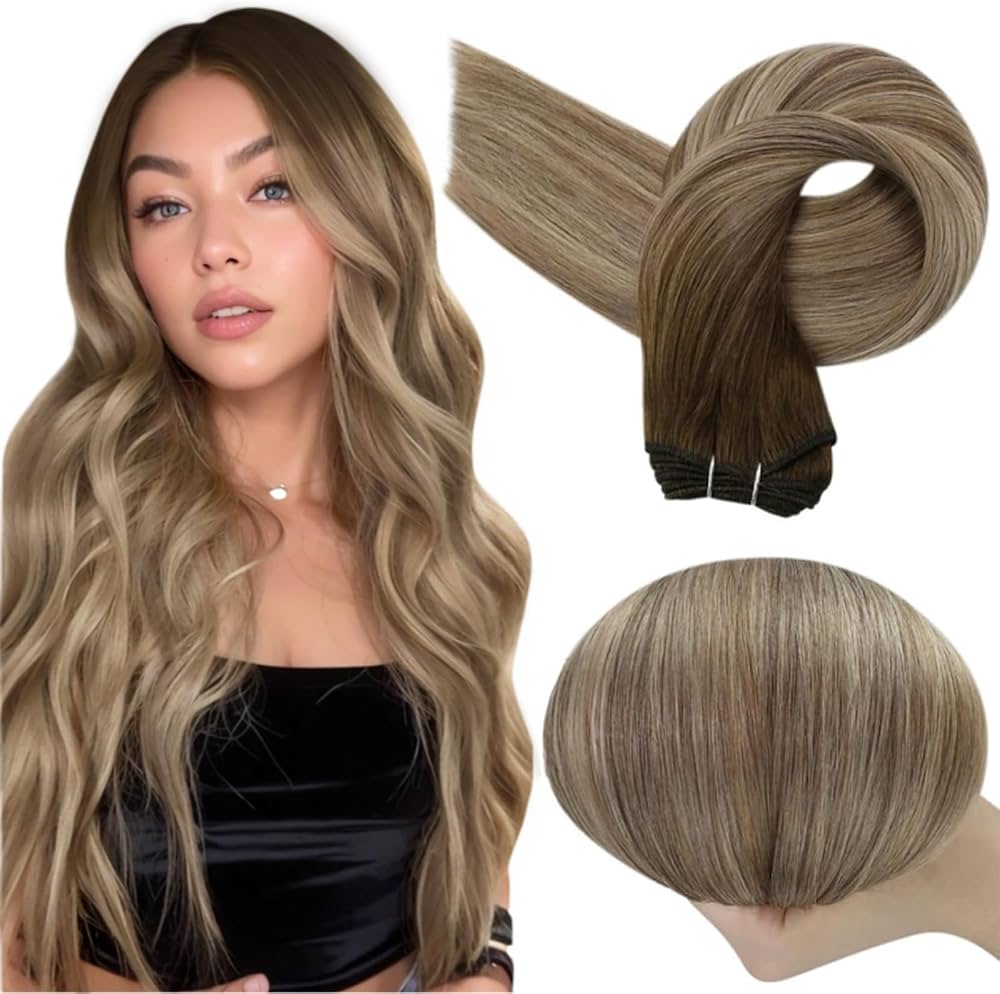Why Are My Hair Extensions Experiencing Breakage?
Hair extension breakage is often caused by improper application1, lack of proper care, and excessive tension or friction. Issues like tight hairstyles2, heavy extensions, and the wrong products can also contribute, as can over-styling with heat or chemical damage. As someone who understands the intricacies of hair care, I can't stress enough how crucial it is to approach hair extensions with the right mindset and techniques. This piece will delve deep into the reasons behind hair extension breakage3 and explore how you can maintain the luscious, long locks you desire.
Do Hair Extensions Cause Breakage?
When worn and cared for properly, hair extensions themselves don't inherently cause breakage. However, they can contribute to it if the application or maintenance is flawed. For instance, tightly pulling your hair into sleek ponytails with extensions or using heavy products can create undue stress on your natural hair, leading to breakage.
Dive Deeper: How Application Affects Hair Health
The process of applying hair extensions—whether it be sew-ins, glue-ins, or clip-ons—plays a significant role in maintaining hair health. A poorly executed installation can lead to breakage at the root. Here are some important considerations:
- Technique and Tools: Professionals typically use specific tools and techniques that minimize stress on your natural hair. Amateur attempts often result in uneven weight distribution or knots, increasing the risk of breakage.
- Skill Level: The skill level of the stylist is crucial. For example, a tightly sewn-in weft can pull your hair at the root, leading to potential damage.
- Maintenance Regimen: Extensions require a consistent maintenance regimen4, including regular brushing and gentle washing. Skipping these steps might cause tangling, which in turn leads to breakage.
Did you know? According to a survey, over 40% of women reported hair damage due to improper extension use. Ensuring you employ a skilled stylist and following a strict care regimen can reduce this risk significantly.
What Are The Most Damaging Hair Extensions?
Not all extensions are created equal. Depending on your hair type, certain extensions might cause more damage than others. Here's a quick comparison:
| Extension Type | Damage Potential | Key Factors |
|---|---|---|
| Clip-Ins | Low | Can be damaging if left in while sleeping |
| Sew-Ins | High | Tension from tight braiding |
| Tape-Ins | Medium | Can slip and cause tangling if installed incorrectly |
| Fusion | High | Uses heat, which can weaken hair over time |
Expert Insights into Choosing Extensions
Choosing the right type of extension involves matching not only your hair type but also your lifestyle and maintenance capabilities:
- Clip-In Extensions: These are often the least damaging since they're not permanent and can be removed easily. However, frequent use without breaks can lead to tension on particular hair sections.
- Sew-In Extensions: Best suited for thicker hair, sew-ins can be tough on finer hair due to the tight braiding technique.
- Tape-In Extensions: Increasingly popular, these extensions provide a balanced option as they distribute weight evenly but need to be installed correctly to avoid slipping.
Pro Tip: Always consult with your stylist before choosing an extension type. They can provide insights based on your hair type and personal needs.
Why Do I Suddenly Have So Much Breakage in My Hair?
A sudden increase in breakage can be shocking, but it often results from subtle changes or mistakes that add up over time. Here's what might be causing it:
Dive Deeper: Sudden Hair Changes
- Tight Hairstyles: Frequent tight hairstyles2 can lead to stress alopecia5, weakening the hair shaft over time.
- Product Buildup: Heavy, non-suitable products like extreme hold gels or hairsprays may wear down your hair's strength.
- Heat and Chemical Treatments: Overuse of styling tools and chemical treatments like coloring weakens the hair, especially when combined with the weight of extensions.
Analogies abound in hair care, much like balancing weights on a delicate scale; adding different stressors without relief can tip you into unwanted territory.
Before/After: Imagine hair healthy and bouncing, then picture it after excessive heat styling and products—it transforms from lively waves to frizzy, broken strands.
What Is The Healthiest Option for Hair Extensions?
If you are seeking the healthiest option, look no further than tape-ins and clip-ins, which are often recommended for their less intrusive nature. However, it's critical to consider your hair type, lifestyle, and the frequency of styling.
Dive Deeper: Finding Balance
Understanding your limits is key. Here’s how you can maintain healthy hair with extensions:
- Regular Breaks: Frequent s breaks or rotation of extensions can offer your natural hair time to recover.
- Gentle Products: Use sulfate-free shampoos and hydrating conditioners. Oils like argan or coconut can provide essential nutrients.
- Routine Check-ups: Regular salon visits for maintenance checks ensure your extensions and natural hair remain in good condition.
Interesting fact: Many stylists recommend a "rest period" every 8 weeks to allow your natural hair to breathe.
Conclusion
It's apparent that maintaining long, luscious locks with hair extensions is entirely possible with the right approach and practices. With the rapidly increasing world of hair care, it's exciting to know how Plucharm Hair, rooted in an unwavering commitment to quality and customer satisfaction since [company establishment], stands as a frontrunner in providing premium hair solutions. As we continue to push industry standards, we hope to guide each reader toward informed choices and happy, healthy hair.
Remember: The key lies in balancing your beauty goals with the well-being of your locks. Choose wisely, care diligently, and your extensions will not just be an accessory, but a testament to your self-care journey.
-
Learn how the application process impacts the longevity and health of your hair extensions. ↩
-
Explore the effects of tight hairstyles on hair health and how to avoid damage. ↩ ↩
-
Understanding the causes of hair extension breakage can help you prevent it and maintain healthy hair. ↩
-
Discover essential maintenance tips to keep your hair extensions looking great and healthy. ↩
-
Explore the connection between stress alopecia and certain hairstyles to protect your hair. ↩




